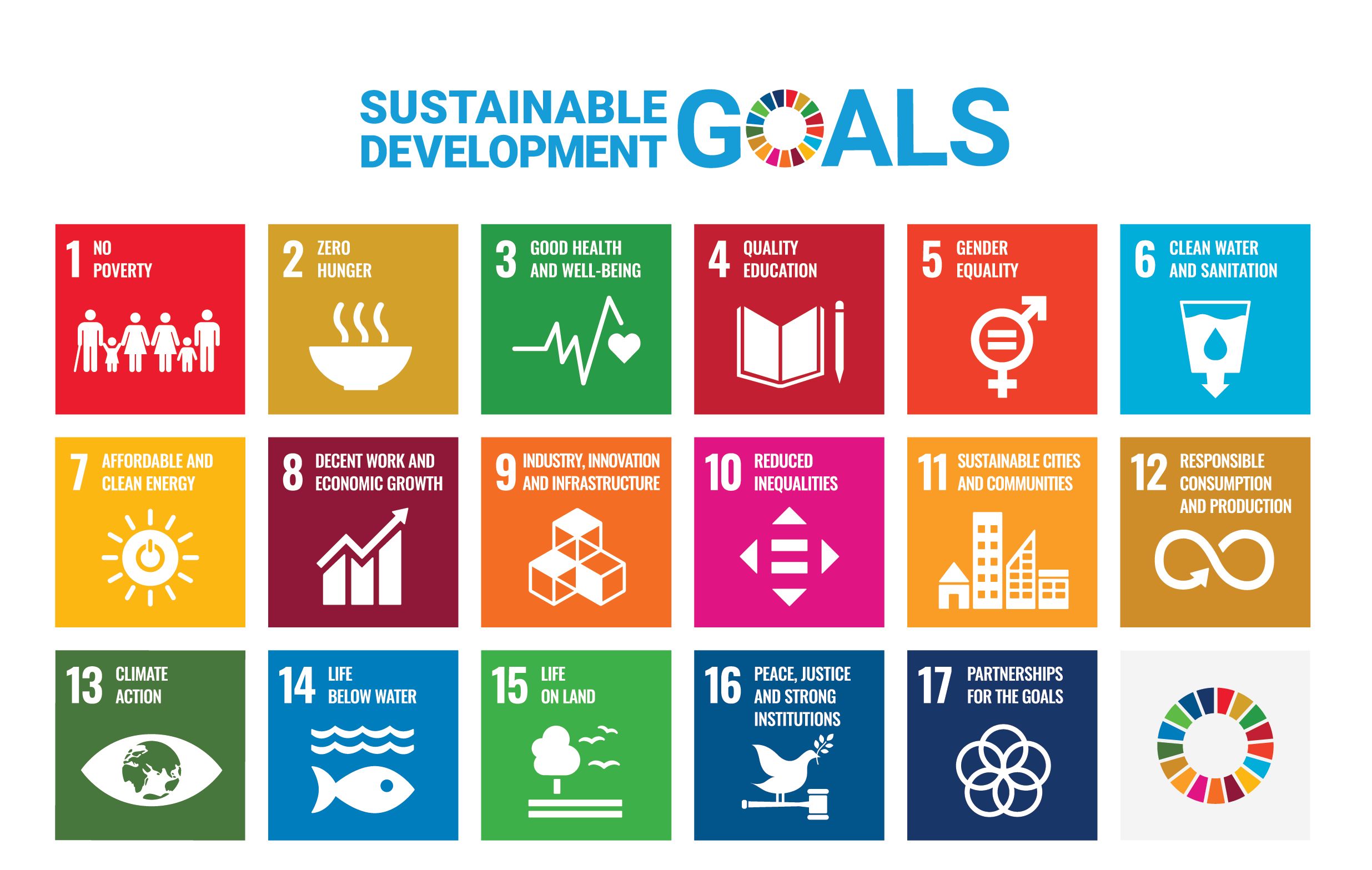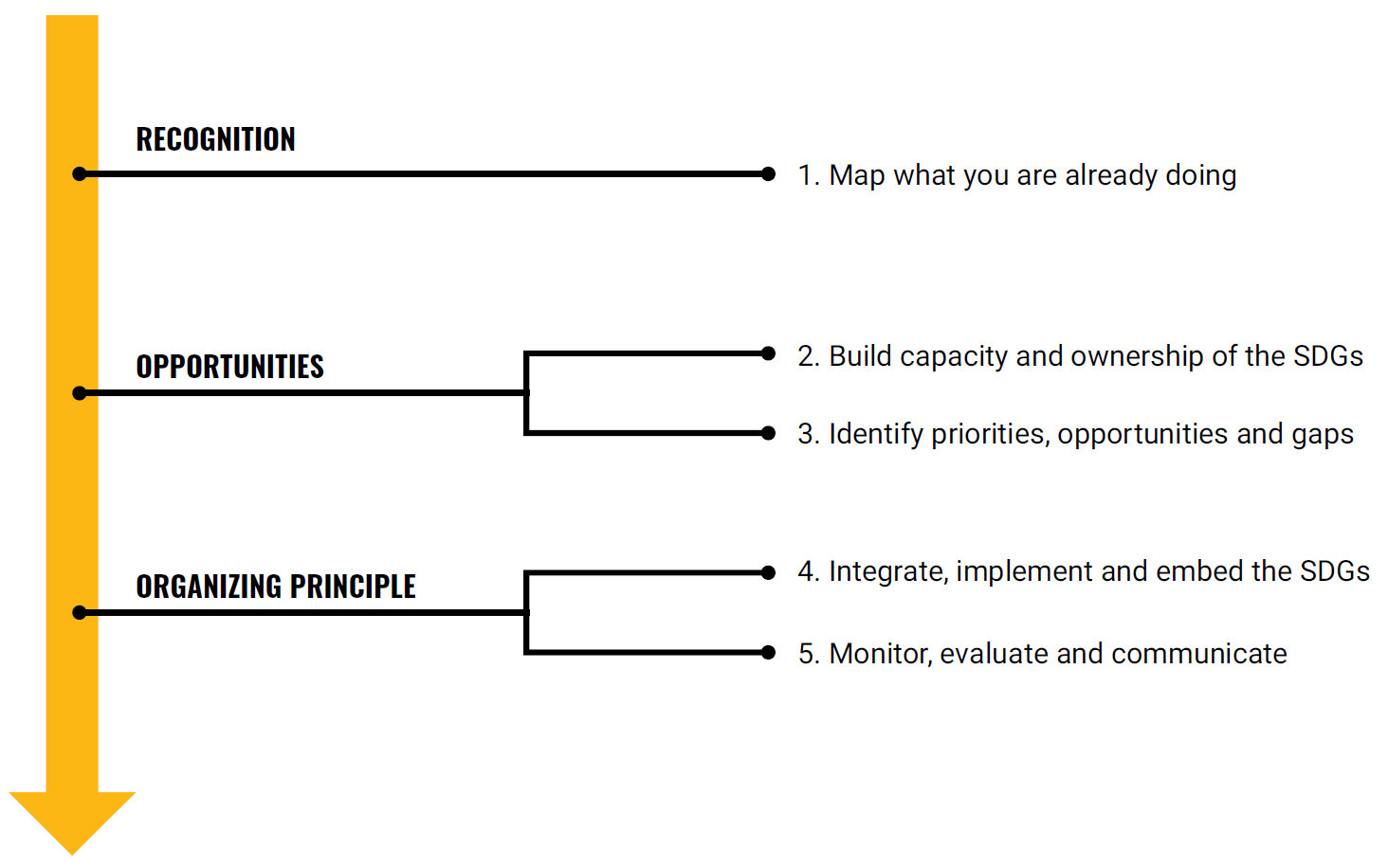Authors: Janika Raun with all Digital Geography Lab members
In 2015, all United Nations member states adopted the 2030 Agenda for Sustainable Development that includes 17 Sustainable Development Goals (SDGs), each with their own set of associated targets (169 in total). The goals address social, economic, and environmental development aspects and call for urgent action, e.g., to end poverty, reduce inequalities and tackle climate change (Fig. 1). The SDGs are increasingly used by different actors of the society to structure and communicate their actions around sustainability. Figure 1. 17 Sustainable Development Goals. Source: https://sdgs.un.org/goals
Figure 1. 17 Sustainable Development Goals. Source: https://sdgs.un.org/goals
Why the SDGs matter for us in DGL?
Universities play a crucial role in the achievement of SDGs as knowledge, innovation, evidence-based solutions, and good quality education are the basis for reaching the targets. As an interdisciplinary research group focusing on spatial Big Data analytics for fair and sustainable societies, we have always worked towards advancing sustainability. As SDGs, despite critique towards them (Arora-Jonsson, 2023), are increasingly used to communicate the sustainability actions in the society, we decided to map also our research activities at the Digital Geography Lab against the SDGs.
We acted as “expert” evaluators and focused only on our current research projects; however, we acknowledge the important role of universities also in learning and teaching, external leadership, and internal organisational operations (Fig. 2).

Figure 2. How universities can contribute to the achievement of SDGs and our focus marked with a green rectangle. Source: SDSN 2020
How did we set out?
To identify what we are already doing to support and contribute to the SDGs, we analysed ten of our current research projects individually. We evaluated the relevancy of each goal and its targets for each project using a three-point scale: relevant – somewhat relevant – not relevant. To reach an overall lab-level conclusion we organised a general discussion where we commented and shared our experiences, and eventually aggregated the project level results by specific goals and targets. The individual evaluation and group-level discussion resulted in a general relevancy list of SDGs that are most dominant in our research group’s work (Fig. 3).
What were the outcomes?
We support all 17 SDGs, but we identified three of them to be more relevant and strategic to us and that we have more impact on. Currently our research projects are most in line with the goal number 11 – “Make cities and human settlements inclusive, safe, resilient and sustainable”, goal number 10 – “Reduce inequality within and among countries”, and goal number 15 – “Protect, restore and promote sustainable use of terrestrial ecosystems, sustainably manage forests, combat desertification, and halt and reverse land degradation and halt biodiversity loss“. We see that several of our projects provide direct input to various specific targets listed underneath the goals. Such as enhancing sustainable and inclusive urbanisation; supporting links between urban, peri-urban and rural areas; facilitating responsible mobility and migration; ensuring equal opportunities and inclusion for all, and integrating ecosystem and biodiversity values into national and local planning.
 Figure 3. The relevancy list of SDGs that are most dominant in our research group’s work based on our expert evaluation.
Figure 3. The relevancy list of SDGs that are most dominant in our research group’s work based on our expert evaluation.
What have we learned from the process?
We have been considering sustainability and equity in our research for long. Nevertheless, evaluating SDGs and their targets from a specific research project point of view was an interesting and eye-opening exercise. First, we became more knowledgeable of the 17 SDGs and their targets. Going through all the 169 targets helped to better grasp the actual content of the goals and compare them to our everyday research work. Second, it helped us to position our research from the SGDs perspective. For example, where we are already providing new knowledge, data, tools, and cooperations but also in which fields we can potentially contribute to with our future work. Third, we found the discussions around the exercise to be especially useful as they enabled us to share our research interests, directions and thoughts on a broader level than we normally do in our everyday discussions.
Thus, we found this mapping exercise to be a very valuable one as it helped to position our work on a broader scale, identify potentials for future research, and take further steps to increase and improve our share in achieving the sustainable development goals.
If you are interested in a similar kind of mapping exercise, then we recommend reading the guidelines compiled by the Sustainable Development Solutions Network (SDSN):
- SDSN Australia/Pacific (2017): Getting started with the SDGs in universities: A guide for universities, higher education institutions, and the academic sector. Australia, New Zealand and Pacific Edition. Sustainable Development Solutions Network – Australia/Pacific, Melbourne. https://ap-unsdsn.org/wp-content/uploads/University-SDG-Guide_web.pdf
- SDSN (2020): Accelerating Education for the SDGs in Universities: A guide for universities, colleges, and tertiary and higher education institutions. New York: Sustainable Development Solutions Network. https://resources.unsdsn.org/accelerating-education-for-the-sdgs-in-universities-a-guide-for-universities-colleges-and-tertiary-and-higher-education-institutions
Figure 4. Getting started with the SDGs. Source: SDSN, 2020
– – – – –
The Digital Geography Lab is an interdisciplinary research team focusing on spatial Big Data analytics for fair and sustainable societies at the University of Helsinki.

